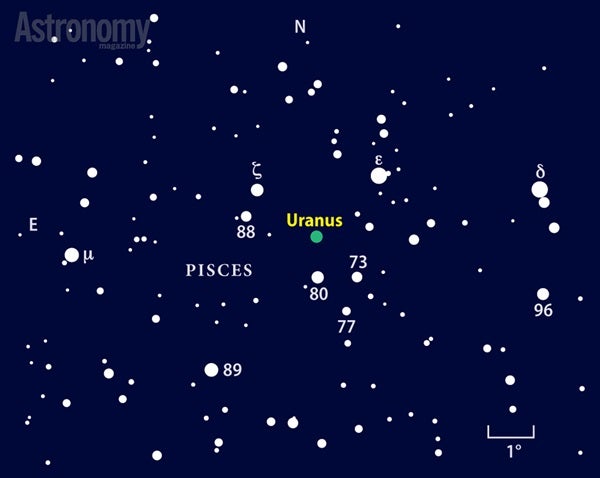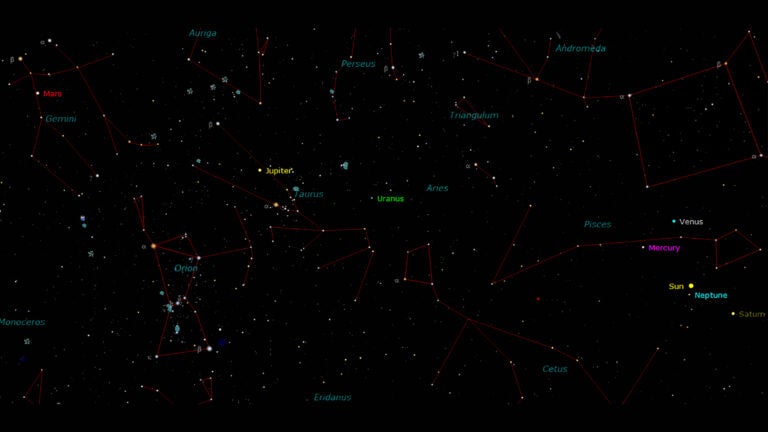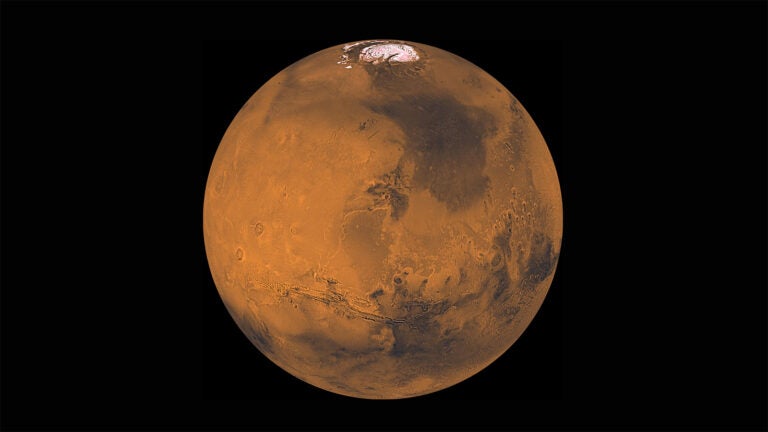Don’t point your telescope at the planet right as our sky gets dark. You’ll have an easier time viewing Uranus if you wait until midevening when it climbs reasonably high in the east-southeast. Use the Great Square of Pegasus as a guide. Draw an imaginary line from Beta (β) to Gamma (γ) Pegasi, the top and bottom of the asterism, respectively, on October evenings. Then continue the line and steer slightly left to pick up Delta (δ) and Epsilon (ε) Piscium. The planet lies in the same binocular field as these two 4th-magnitude stars.
As October began, Uranus stood 2° east-southeast of (below) Epsilon Piscium. The planet tracks westward all month but covers only about 1° of sky. It spends the last three weeks of October traveling just north of a conspicuous triangle of 6th-magnitude stars. When viewed through a telescope, Uranus shows a 3.7″-diameter disk with a distinctive blue-green color. [NOTE: the ” symbol is the way astronomers abbreviate arcseconds, a way to measure the apparent sizes of celestial bodies. One arcsecond equals 1/3,600 of 1°.]
Astronomy magazine Contributing Editor Mike Reynolds loves showing people Uranus. “Everyone’s heard about the planet, but so very few people actually have seen it,” he says. “I use it as an opportunity to tell people that the solar system is a lot bigger than the few objects our eyes can see.”
FUN FACTS ABOUT URANUS
• German-born British astronomer Sir William Herschel discovered Uranus on March 13, 1781.
• The Sun is 363 times as bright from Earth as from Uranus.
• It takes Uranus about 44 days to move the width of the Full Moon.
• Uranus is 14½ times as massive as Earth.
• If Uranus were hollow, it could hold 63 Earths.
- Video: Easy to Find Objects in the 2015 Fall Sky, with Michael E. Bakich, senior editor
- StarDome: Locate Uranus in your night sky with our interactive star chart.
- The Sky this Week: Get your Uranus observing info from a daily digest of celestial events coming soon to a sky near you.
- Sign up for our free weekly email newsletter.











